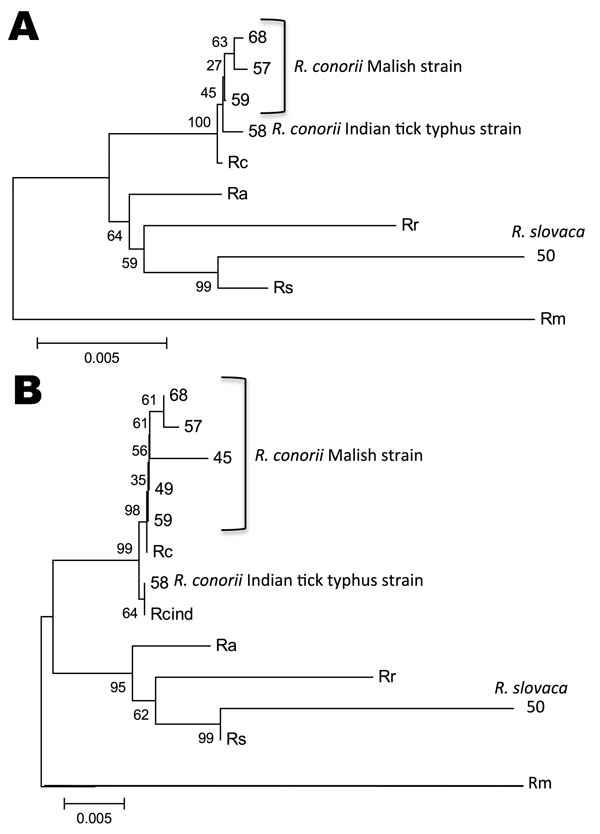Volume 18, Number 6—June 2012
Letter
Rickettsia conorii Indian Tick Typhus Strain and R. slovaca in Humans, Sicily
Figure

Figure. . . Multilocus sequence analysis of Rickettsia spp. Evolutionary history was inferred by using the neighbor-joining method for ATP synthase α subunit (atpA)–heat shock protein 70 (dnaK)–outer membrane protein A (ompA)–ompB–citrate synthase (gltA)–17-kDa (A) and ompA–ompB sequences (B). The optimal tree with the sum of branch length = 0.06205323 (A) and 0.11097561 (B) is shown. The percentage of replicate trees in which the associated taxa clustered together in the bootstrap test (1,000 replicates) are shown next to the branches. The tree is drawn to scale, with branch lengths in the same units as those of the evolutionary distances used to infer the phylogenetic relationship. Evolutionary distances were computed by using the Kimura 2-parameter method and are in the units of the number of base substitutions per site. All ambiguous positions were removed for each sequence pair. Evolutionary analyses were conducted in MEGA5 (www.megasoftware.net). Identification numbers of strains detected are shown with the species/strain name next to them. Rc, R. conorii strain Malish 7; Ra, R. africae strain ESF-5; Rr, R. rickettsii strain Iowa; Rs, R. slovaca; Rm, R. massiliae strain MTU5; Rcind, R. conorii Indian tick typhus strain.